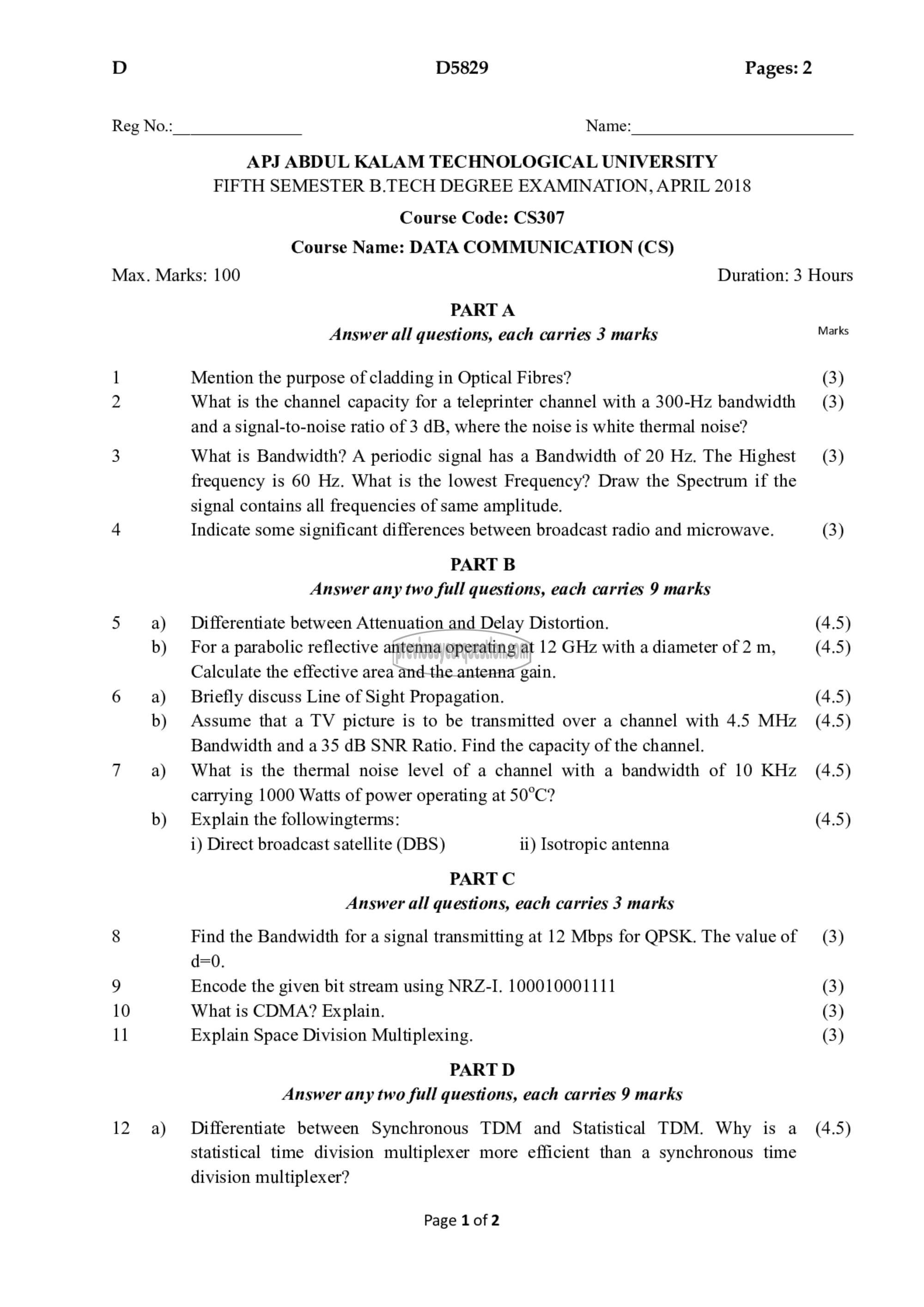APJ ABDUL KALAM TECHNOLOGICAL UNIVERSITY Previous Years Question Paper & Answer
Semester : SEMESTER 5
Subject : Data Communication
Year : 2018
Term : APRIL
Branch : COMPUTER SCIENCE AND ENGINEERING
Scheme : 2015 Full Time
Course Code : CS 307
Page:1
D D5829 Pages: 2
Reg No.: Name:
APJ ABDUL KALAM TECHNOLOGICAL UNIVERSITY
FIFTH SEMESTER B.TECH DEGREE EXAMINATION, APRIL 2018
Course Code: CS307
Course Name: DATA COMMUNICATION (CS)
Max. Marks: 100 Duration: 3 Hours
PART A
Answer all questions, each carries 3 marks Marks
1 Mention the purpose of cladding in Optical Fibres? (3)
2 What is the channel capacity for a teleprinter channel with a 300-117 bandwidth (3)
and a signal-to-noise ratio of 3 dB, where the noise is white thermal noise?
3 What is Bandwidth? A periodic signal has a Bandwidth of 20 Hz. The Highest (3)
frequency is 60 Hz. What is the lowest Frequency? Draw the Spectrum if the
signal contains all frequencies of same amplitude.
4 Indicate some significant differences between broadcast radio and microwave. (3)
PART B
Answer any two full questions, each carries 9 marks
5 ஐ Differentiate between Attenuation and Delay Distortion. (4.5)
b) Fora parabolic reflective antenna operating at 12 GHz with a diameter of 2 m, (4.5)
Calculate the effective area and the antenna gain.
6 9) Briefly discuss Line of Sight Propagation. (4.5)
b) Assume that a TV picture is to be transmitted over a channel with 4.5 MHz (4.5)
Bandwidth and a 35 dB SNR Ratio. Find the capacity of the channel.
7 2) What is the thermal noise level of a channel with a bandwidth of 10 KHz (4.5)
carrying 1000 Watts of power operating at 50°C?
b) Explain the followingterms: (4.5)
i) Direct broadcast satellite (DBS) ii) Isotropic antenna
PART C
Answer all questions, each carries 3 marks
8 Find the Bandwidth for a signal transmitting at 12 Mbps for QPSK. The value of (3)
d=0.
9 Encode the given bit stream using NRZ-I. 100010001111 (3)
10 What is CDMA? Explain. (3)
11 Explain Space Division Multiplexing. (3)
PART D
Answer any two full questions, each carries 9 marks
12 a) Differentiate between Synchronous TDM and Statistical TDM. Why is a (4.5)
statistical time division multiplexer more efficient than a synchronous time
division multiplexer?
Page 1 2
